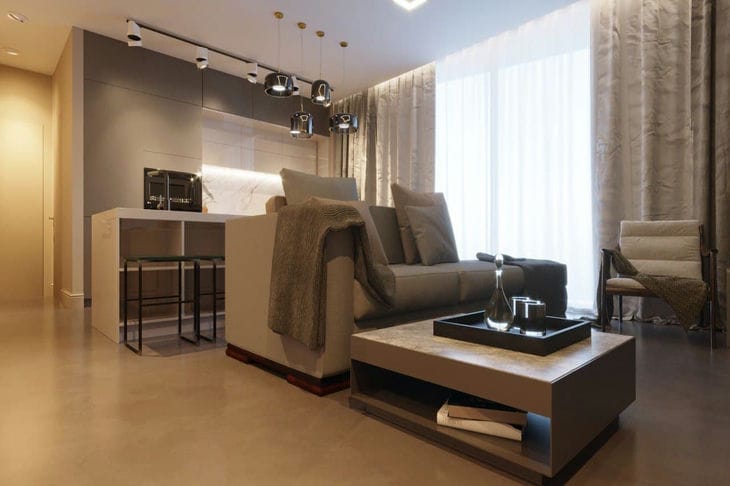Selecting a color scheme for a living room is a responsible process that largely determines the atmosphere and mood of the entire room.
First of all, you should decide on the desired style - classic, modern, ethnic, and so on.
For a classic interior, calm shades are suitable - beige, sand, soft blue, pale green, says Yulia Tychino .

These colors create a sense of peace and comfort. You can also use classic combinations - white and gold, gray and blue.
Neutral colors look good in combination with bright accents - pillows, vases, paintings in contrasting tones. For example, white and red, gray and yellow. This will allow you to liven up the atmosphere without disturbing the harmony.
For modern interiors, bolder solutions are suitable - bright, saturated colors, contrasting combinations.
You can use all shades of blue, green, brown, purple. Black color in combination with bright accents also looks impressive.
When choosing a color scheme for an ethnic style, it is worth taking inspiration from the culture and traditions of a particular country.
For example, light shades of blue, green, beige - the colors of the Mediterranean - are suitable for the European style. The oriental style can be created using rich shades - crimson, gold, emerald.
An important point is to take into account the lighting of the room. In dark rooms, it is better to choose light colors - white, beige, soft blue, light green.
This will visually make the space more airy and spacious. In light rooms, you can safely use darker colors - shades of brown, blue, green.
It is necessary to pay attention to the size of the room. A large living room looks more harmonious in neutral light colors. Dark saturated colors will give a small space visual heaviness.
To make the color scheme harmonious, choose 3-4 main shades and 1-2 bright accent shades. Avoid motley spotted combinations - this will disrupt the integrity of the interior.
When choosing a color for the walls, decide on the main tone, and for the furniture, select 2-3 complementary shades. For example, beige walls + brown furniture + green and blue decorative elements.
It is better to choose a neutral color for the floor - natural wood, light laminate, beige carpet. This will create a base against which the colored walls and furniture will look brighter.
Pay attention to the finishing - it is advisable to paint baseboards, moldings, cornices in the same color as the walls or make them in a contrasting color. This will help divide the space into zones.
The main rule is not to be afraid of experiments and try different options. You can gradually change the decor, textiles, furniture to refresh the interior. And of course, always consider your own preferences and feelings about this or that color.









